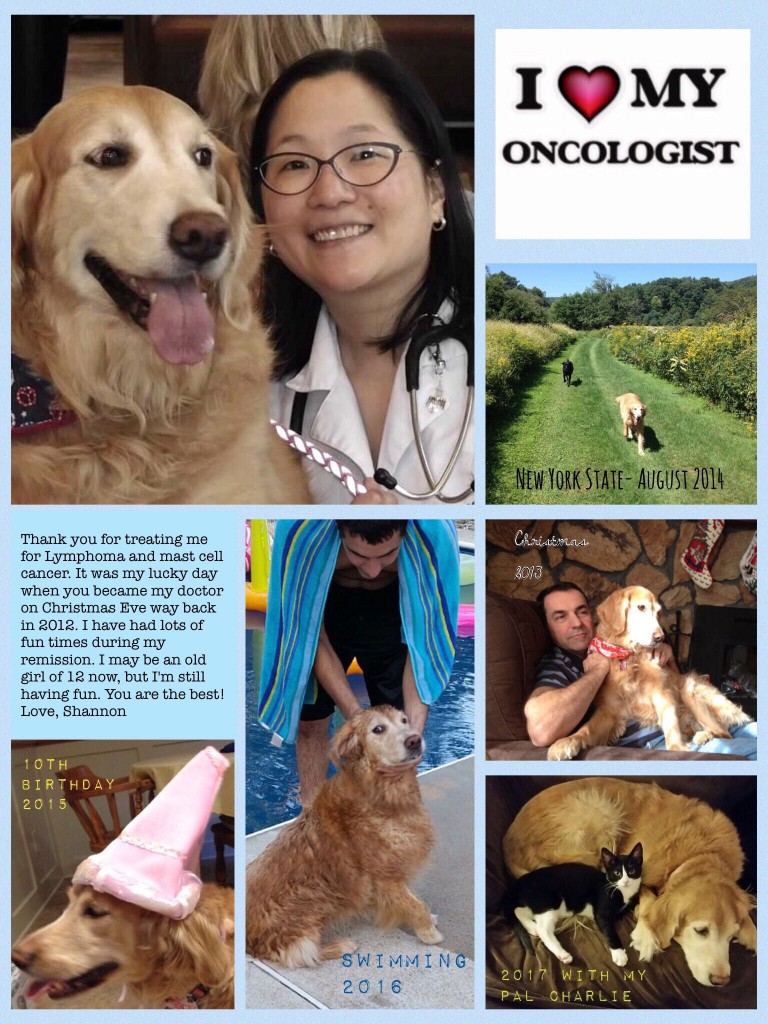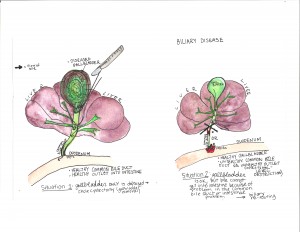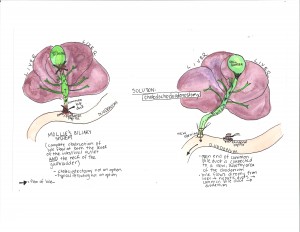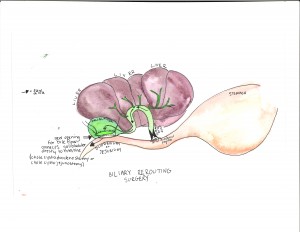-
Recent Posts
Archives
- October 2022
- August 2022
- May 2022
- March 2022
- January 2022
- December 2021
- September 2021
- July 2021
- June 2021
- May 2021
- April 2021
- February 2021
- January 2021
- November 2020
- October 2020
- September 2020
- June 2020
- April 2020
- March 2020
- February 2020
- January 2020
- December 2019
- November 2019
- October 2019
- September 2019
- June 2019
- March 2019
- February 2019
- January 2019
- December 2018
- November 2018
- October 2018
- August 2018
- July 2018
- June 2018
- May 2018
- April 2018
- March 2018
- February 2018
- January 2018
- December 2017
- November 2017
- October 2017
- September 2017
- August 2017
- July 2017
- June 2017
- May 2017
- April 2017
- March 2017
- February 2017
- January 2017
- December 2016
- November 2016
- August 2016
- July 2016
- June 2016
- May 2016
- April 2016
- March 2016
- February 2016
- January 2016
- December 2015
- November 2015
- October 2015
- September 2015
- August 2015
- July 2015
- June 2015
- May 2015
- April 2015
- March 2015
- December 2014
- June 2014
- May 2014
- April 2014
- November 2013
- September 2013
- August 2013
- July 2013
- June 2013
- May 2013
- March 2013
- January 2013
- November 2012
- October 2012
- July 2012
- December 2011
- November 2011
- October 2011
- September 2011
- August 2011
- July 2011
- June 2011
- May 2011
- April 2011
- March 2011
- February 2011
- January 2011
- December 2010
- November 2010
Categories
Honoring Shannon
Shannon is a dog that came to the NorthStar VETS Oncology service on Christmas Eve of 2012 with lymphoma. She was 7 years old at the time and we started the standard CHOP chemotherapy protocol for her. Shannon did quite well through treatment and remains in remission for her lymphoma, but would have a second battle to win.
This past August, she came in for a recheck because a mass was noticed on her neck. A procedure called a fine needle aspirate and cytology were performed and found the mass to be a second type of cancer, a mast cell tumor. The mast cell tumor was removed the next day by Dr. Arulpragasam of the NorthStar VETS Surgery team. The biopsy returned as a low-grade tumor with complete margins, meaning that the cancer was fully removed during surgery.
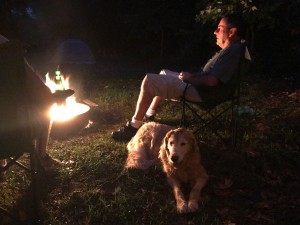 Shannon is now 12 years old and nearly 5-years from her initial diagnosis of lymphoma. She has so far beaten two cancers! Recently, she came back from a camping trip with her family and she is still doing great! Shannon is a great example of how we can extend good quality of our life for our patients with both surgery and chemotherapy together.
Shannon is now 12 years old and nearly 5-years from her initial diagnosis of lymphoma. She has so far beaten two cancers! Recently, she came back from a camping trip with her family and she is still doing great! Shannon is a great example of how we can extend good quality of our life for our patients with both surgery and chemotherapy together.
Learn more about the Oncology service at NorthStar VETS.
 Jennifer Kim, DVM, DACVIM (Oncology)
Jennifer Kim, DVM, DACVIM (Oncology)
Dr. Kim grew up in New York and received her BA from the University of Pennsylvania. After two years at the National Cancer Institute performing cancer genetic research, she attended veterinary school at Tufts University. Dr. Kim completed a rotating internship at the Animal Medical Center in Manhattan, New York, and an oncology internship at Cornell University. She began at NorthStar VETS as an emergency clinician in 2005 and returned in 2010 to treat oncology patients after completing her residency in medical oncology at Michigan State University School of Veterinary Medicine. In her free time, Dr. Kim is an avid foodie and knitter.
Posted in Pets, Veterinary Medicine
Tagged Jennifer Kim DVM, lymphoma, mast cell, NorthStar VETS, Veterinary Oncology
2 Comments
NorthStar VETS Cool Case Mollie
The team at NorthStar VETS is doing innovative and amazing things every day as they work to advance the level of care available to your pet. This series of posts highlights cool cases at NorthStar VETS and the types of things done to save pets and improve their quality of life. These are cases using innovative and cutting-edge medical techniques, and/or stories of pets beating the odds. This is the story of Mollie, a patient of Dr. Kelly Kraus of our Surgery team.
About Mollie
Mollie is a thirteen year old cat who came to see the Internal Medicine department about 6 months ago for increased drinking, urinating, an episode of vomiting, and elevated liver enzymes noted on her veterinarian’s bloodwork. She had an abdominal ultrasound, which revealed evidence of pancreatic inflammation. She also had additional bloodwork that indicated possible diabetes. Mollie was started on oral medications and initially improved.
Mollie’s Condition
However, she was rechecked several weeks later and her appetite was declining. She had an esophageal feeding tube placed to assist with her nutrition. Recheck bloodwork several weeks later revealed that despite treatment with medications and nutrition, her liver values were continuing to climb drastically. In particular, her total bilirubin was elevated greater than 28 mg/dL (the high end of normal bilirubin in a cat is 0.9 mg/dL.) Bilirubin is a normal product produced in the body that is processed by the liver and excreted into the intestine by the gallbladder and biliary tract. Bile contains bilirubin, and is useful for digesting fats. Mollie’s recheck abdominal ultrasound at the time of her extremely elevated bilirubin now demonstrated that her biliary tract was markedly distended.
![Figure 1: Schematic representation of a normal liver, biliary system, intestine and pancreas in a cat [Watercolor images courtesy of Dr. Kelly Kraus]](http://www.northstarvets.com/blog/wp-content/uploads/2017/09/20170908092950_00001-300x232.jpg)
Figure 1: Schematic representation of a normal liver, biliary system, intestine and pancreas in a cat [Watercolor images courtesy of Dr. Kelly Kraus]
Mollie’s Treatment
Due to Mollie’s progressively elevating bilirubin, her significantly dilated common bile duct, and the fact that she remained sick despite treatment, an abdominal exploratory surgery was recommended. Mollie was placed under anesthesia. During her exploratory surgery, it was found that Mollie had blockages at both the end of the common bile duct/duodenal papilla AND the base of the gallbladder (see Fig. 3, 1st image.) The multiple locations of blockages left only one option for repair, which was a choledochoduodenostomy (Fig. 3, 2nd image, in which the open end of the common bile duct is connected to the intestine in a healthy location.)
How Things Went for Mollie
Luckily, Mollie recovered exceptionally well, healed her surgery site, and began eating soon after surgery. Biopsies that had been obtained at surgery to rule out cancer as a cause of the gallbladder and bile duct obstructions revealed scar tissue only. Her bilirubin quickly returned to normal. We think the most likely cause of Mollie’s biliary problems was scarring and inflammation due to her pancreatitis. Referring to figure 1, it is notable that the pancreatic duct system is extremely closely associated to the bile duct system, especially in a cat. Therefore, inflammation occurring in the pancreatic system, intestines, or gallbladder can cause a triad of problems.
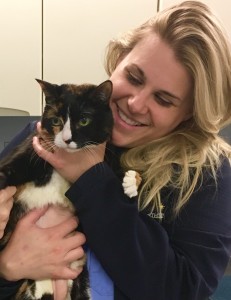 Mollie’s feeding tube was removed and she enjoyed a cuddle with her care team at her last recheck (photograph 1.) Everyone at NorthStar VETS was so happy Mollie was able to recover from such a severe illness and continue to enjoy her life with her owner.
Mollie’s feeding tube was removed and she enjoyed a cuddle with her care team at her last recheck (photograph 1.) Everyone at NorthStar VETS was so happy Mollie was able to recover from such a severe illness and continue to enjoy her life with her owner.
Learn more about the Surgery service at NorthStar VETS
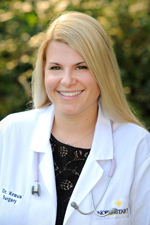 Kelly Kraus, VMD, DACVS
Kelly Kraus, VMD, DACVS
Dr. Kraus is originally from Connecticut. She obtained a Bachelor of Science degree from Loyola University in Baltimore, Maryland in 2003 before moving to Philadelphia, where she did molecular genetics research for two years at the University of Pennsylvania. Dr. Kraus then completed veterinary school at the University of Pennsylvania in 2009. After graduating, she completed a rotating internship at Oradell Animal Hospital in Paramus, NJ. She then moved to Texas to complete a one-year internship in surgery at Gulf Coast Veterinary Specialists. She was fortunate to then move back to New Jersey for a three-year residency in surgery at Red Bank Veterinary Hospital, which she completed in 2014.
She is excited to be part of the surgery team at NorthStar Vets. Her special surgical interests include, but are not limited to, wound management and reconstructive surgery, surgical oncology, cardiothoracic surgery, and hepatobiliary surgery. Dr. Kraus also enjoys management of orthopedic conditions. She is trained in the tibial plateau leveling osteotomy (TPLO) for cranial cruciate ligament disease. Outside of work, Dr. Kraus enjoys spending time with her family, cooking, traveling, and helping her local SPCA.
The information presented on this web site is not intended to take the place of your family veterinarian’s advice and is not intended to diagnose, treat, cure or prevent any disease. Discuss this information with your own veterinarian to determine what is right for your pet. All information is intended for your general knowledge only and is not a substitute for medical advice or treatment for specific medical conditions. We can not and do not give you medical advice via this blog. The information contained in this online site and emails is presented in summary form only and intended to provide broad understanding and knowledge. The information should not be considered complete and should not be used in place of a visit, call, consultation or advice of your veterinarian. We do not recommend the self-management of your pet’s health problems.
Posted in Pets, Veterinary Medicine
Tagged Cat, Feline liver disease, Kelly Kraus, NorthStar VETS, surgery
Leave a comment
NorthStar VETS Goes Fear Free
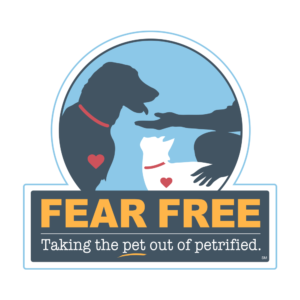 NorthStar VETS has taken on an important initiative designed to further the hospital’s purpose of improving the quality of life for patients, clients, the family veterinarian, and our staff. In 2017, NorthStar VETS set the goal of reducing stress for patients. Less stress means greater safety and well-being for patients, and The Fear Free initiative will help to create better medical outcomes and experiences for your pet.
NorthStar VETS has taken on an important initiative designed to further the hospital’s purpose of improving the quality of life for patients, clients, the family veterinarian, and our staff. In 2017, NorthStar VETS set the goal of reducing stress for patients. Less stress means greater safety and well-being for patients, and The Fear Free initiative will help to create better medical outcomes and experiences for your pet.
How Fear Free Works
A typical example of how Fear Free works is when a stressed, fearful pet is sitting in the lobby, and a NorthStar VETS team member takes that pet out of that environment as soon as possible (into a quiet room or area). In the new, less stressful space, pheromones are sprayed on towels and blankets to help soothe the patient, and the doctor and technician speak calmly and move slowly to prevent the patient from being startled. Treats are employed to coax the patient through the treatments and exams. This allows us to turn a negative atmosphere into a positive one.
What NorthStar VETS did to Take Veterinary Care to the Next Level
The Fear Free initiative provides veterinary team members with the knowledge and tools to not only look after a pet’s physical well-being, but his/her emotional well-being, too. We know that stress and anxiety associated with taking a pet to the veterinarian is a significant obstacle in delivering medical care. Fear leads to trauma for patients, and as a result, pet parents visit their veterinarian less frequently or not at all. The Fear Free initiative is a solution that can reduce feelings of stress and anxiety, resulting in a better experience for all involved, including pets, pet parents, and veterinary health care teams.
Our team is going through the Fear Free Certification Program as we continue our commitment to enhancing the level of care we provide to our patients.
You may find more information about this initiative and how you can make your own home Fear Free at fearfreepets.com.
NorthStar VETS Cool Case Timothy
The team at NorthStar VETS is doing innovative and amazing things every day as they work to advance the level of care available to your pet. This is part of a series of posts highlighting cool cases at NorthStar VETS and the types of things done to save pets and improve their quality of life. These are cases using innovative and cutting-edge medical techniques, and/or stories of pets beating the odds. This is the story of Timothy, a dog that came to NorthStar VETS for an innovative surgery technique to help with a kidney stone issue. Dr. Heather Knapp-Hoch and Dr. Kimberly Hammer of the Interventional Radiology team were able to make this dog more comfortable with minimal disruption to delicate tissue.
Learn more about the Interventional Radiology service at NorthStar VETS.
 Kimberly Hammer, VMD, DACVIM
Kimberly Hammer, VMD, DACVIM
Dr. Hammer received her veterinary degree from the University of Pennsylvania School of Veterinary Medicine in 2000. She spent a year at Mississippi State University College of Veterinary Medicine for a small animal internship and returned to the University of Pennsylvania for a two-year residency in small animal internal medicine. She earned board certification from the American College of Veterinary Internal Medicine in 2004. She has a special interest in interventional radiology/endoscopy and minimally invasive procedures. Her other interests include endocrinology, gastroenterology and hematology. She currently serves as the medical adviser for the NorthStar VETS blood bank. She joined the NorthStar VETS team in September 2007.
Outside of work she enjoys hiking, mountain biking, going to music concerts and reading.
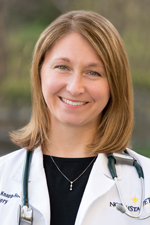 Heather Knapp-Hoch, DVM, MS, DACVS
Heather Knapp-Hoch, DVM, MS, DACVS
Originally from New Jersey, Dr. Knapp-Hoch is excited to return home and join the NorthStar VETS surgical team. Dr. Knapp-Hoch earned her Bachelor of Science in biology from Long Island University in 2001. She then traveled across the US to obtain a Masters degree in genetics and cell and molecular biology from Washington State University where she also obtained her Doctorate of Veterinary Medicine in 2007. Dr. Knapp-Hoch then completed a small animal rotating internship at Cornell University in 2008. Following her internship she completed a three-year surgical residency at Cornell University in 2011. She obtained board certification in 2012 and practiced as a small animal clinical instructor at Cornell University from 2011-2014.
Dr. Knapp-Hoch’s special areas of interest include surgical oncology and minimally invasive surgery including laser ablation of ectopic ureters. She is proficient in advanced wound management and has a special interest in the use of negative pressure wound therapy (NPWT) to treat difficult surgical and traumatic wounds. She is trained in both the tibial plateau leveling osteotomy (TPLO) and the tibial tuberosity advancement (TTA) surgical procedures for cranial cruciate ligament disease.
NorthStar VETS Cool Case Ruby
The team at NorthStar VETS is doing innovative and amazing things every day as they work to advance the level of care available to your pet. This is part of a series of posts highlighting cool cases at NorthStar VETS and the types of things done to save pets and improve their quality of life. These are cases using innovative and cutting-edge medical techniques, and/or stories of pets beating the odds. This is the story of Ruby, a 4 month old Rhode Island Red hen that came to NorthStar VETS through emergency unable to stand and in shock. Dr. Matthew Grootenboer of the Avian and Exotics team was able to get this hen back on her feet.
Upon examination, it was clear that Ruby had a serious coccidian (parasite) infection that needed to be treated. Dr. Grootenboer placed an IV and let it run for a few days while he treated her. She was very sick, but eventually recovered. Soon, she was finally well enough to go home, where her pet parents fashioned an impressive wheelchair-like apparatus that allowed Ruby to get around while she recovered (see video below).
Learn more about the Avian and Exotics service at NorthStar VETS.
 Matthew Grootenboer, VMD
Matthew Grootenboer, VMD
Dr. Matt Grootenboer attended veterinary school at the University of Pennsylvania and graduated in 2015. He went on to complete an internship in small animal medicine at Oradell Animal Hospital. From there, he traveled to Florida to complete an internship in exotic animal medicine at Broward Avian and Exotic Animal Hospital where he appeared on the National Geographic TV show Dr. K’s Exotic Animal ER. He has returned to his home state of New Jersey to continue working with exotic companion animals at NorthStar VETS. An extension of his passion for exotics is his interest in zoo animals and wildlife. He has worked with a variety of unusual species throughout his career, including kinkajous, kangaroos, and giraffes. Dr. Grootenboer is a firm believer in the idea that all animals are equally important no matter how small or short-lived and to their parents these pets mean as much as a dog or cat would.
He lives in Princeton, NJ with his cat Penny, rat, and hamster. When not working, Dr. Grootenboer likes to stay active whether that means going to the gym or for a bike ride/hike. He also likes to play the drums in his spare time. Each fall Dr. Grootenboer becomes a bit difficult to reach on Sundays as he cheers for his favorite football team, the Miami Dolphins.
Posted in Pets, Veterinary Medicine
Tagged Avian and Exotics, Matthew Grootenboer VMD, NorthStar VETS
Leave a comment
Meet the NorthStar VETS Team: Vincent Patanio, DVM
Dr. Vincent Patanio is a member of the Veterinary Emergency and Critical Care team at NorthStar VETS. In this blog post and video below, he talks about how he got into veterinary medicine, the kinds of cases he sees and how his interactions with clients make him a better doctor every day.
How Dr. Patanio got into Veterinary Medicine
We caught up with Dr. Patanio, who was checking out one of our canine blood donors. Dr. Patanio originally worked with computers before beginning his career in veterinary medicine. “I initially started in computer technology, fixing network printers and that sort of thing. Then I went back to college and enjoyed the science of veterinary technology and just took it from there. I completed my undergraduate work at the University of Massachusetts at Amherst, and went to veterinary school at the Western University of Health Sciences in California. After that, I did a rotating internship at another hospital here in New Jersey. A friend of mine worked here at NorthStar VETS while I was an intern, so I ended up transitioning to here as an Emergency Veterinarian a couple of years ago.”
The Kind of Cases Dr. Patanio Sees
Dr. Patanio works with the Emergency and Critical Care cases at NorthStar VETS. “Typically, we see any emergency that comes through the doors, from hit-by-cars and toxicities to even minor things, too. Anything that comes through the door is what we have to deal with.”
Buzz was the patient being examined. Buzz donated to the NorthStar VETS blood bank to help other pets, and you can find out more information about getting involved at northstarvets.com/blood-bank.
Dr. Patanio and the team at NorthStar VETS sees a wide variety of cases each week. “All of our emergency doctors and specialists work together to make sure that these patients are all getting the best care. Typically, the most qualified person in the hospital is the one who is taking care of the pet at home, and I get to interact with these people every day and make myself better. That is the best part for me!”
What Dr. Patanio loves about being an Emergency Veterinarian
Dr. Patanio and the team at NorthStar VETS are available 24/7 to help you and your pets. “For what I do, it’s something different not just every day, but every hour. It’s an exciting calling!”
Learn more about the Emergency service at NorthStar VETS
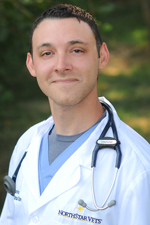 Vincent Patanio, DVM
Vincent Patanio, DVM
Originally from Brooklyn, NY, Dr. Patanio obtained his Bachelor of Science from the University of Massachusetts -Amherst in 2008. He went on to pursue his DVM degree from Western University of Health Sciences where he graduated in 2012. Dr. Patanio completed a one year rotating internship at Garden State Veterinary Specialists, was subsequently hired as an emergency doctor and spent two years working with their emergency and critical care department. Dr. Patanio joined the emergency team at Northstar VETS in April 2015.
Meet the NorthStar VETS Team: Kate Kerrigan, DVM, MS, DACVR
Dr. Kate Kerrigan is a member of the Veterinary Radiology team at NorthStar VETS. In this blog post and video below, she talks about her decision to go into veterinary medicine, how Radiologists fit into the overall team caring for pets, and what she gets out of helping pets in this way.
Dr. Kerrigan’s education
We caught up with Dr. Kerrigan, who was performing an ultrasound on a patient in Robbinsville. Dr. Kerrigan has been working in Radiology at NorthStar VETS since 2014, and she has always wanted to work in medicine. “I knew wanted to do some type of medicine, but wasn’t sure what type, but when I was in my second year of undergraduate work at the University of Connecticut, I took a class called Health and Disease Management of Animals, and it really caught my attention. I enjoyed the instructors and I loved the class work, and I made up my mind from there. I worked a couple of years after that as an uncertified veterinary technician before I went to veterinary school, and I ended up going to the University of Illinois for four years. I did my internship at the University of Pennsylvania, and then went back the University of Illinois in Champaign for my residency, which was a three-year imaging residency. I started looking for jobs after I passed the boards and ended up in New Jersey because I am originally from Connecticut and wanted to be back on the east coast.”
What Veterinary Radiologists do
Dr. Kerrigan works in the NorthStar VETS Radiology department and oversees all of the advanced imaging between both hospitals. “I read all of the radiographs both for the Robbinsville location and the Maple Shade location. I do a lot of the ultrasounds in the hospital and the Internal Medicine specialists do some as well, so we share that caseload. Dr. Williams, our other Radiologist, and I both read all of the CTs and MRIs that go on in the hospital. It’s a fun job in that we’re involved in all aspects of medicine among the different services, but we act behind the scenes.”
Dr. Kerrigan works with a wide variety of cases, helping to provide all kinds of medical imaging. “I really like the patient interaction at NorthStar VETS. A lot of Radiologists have the ability now to work from home exclusively doing Telemedicine, which is really becoming very popular, but being in clinical practice, especially in a big specialty hospital, was really important to me because I get to see the patients, I get to be hands-on, I really enjoy the other doctors and technicians, and that’s what I really like about it here. The quality of medicine is great and the staff is great.”
What Dr. Kerrigan loves about being a Veterinary Radiologist
Dr. Kerrigan and the team at NorthStar VETS will continue to provide world-class care to you and your pets. “The human-animal bond is something that really pulls at my heartstrings and made me realize I wanted to be involved and practice medicine of some sort. Radiology just fell into place for me in veterinary school, so I feel like I have the best of both worlds. I get to interact with the patients, I get to be involved with the imaging, and work with all the different services, and that’s what I love about it.”
Learn more about the Radiology service at NorthStar VETS
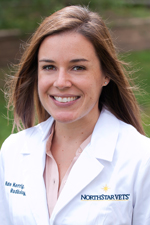 Kate Kerrigan, DVM, MS, DACVR
Kate Kerrigan, DVM, MS, DACVR
Dr. Kerrigan, originally from Connecticut, is a graduate of the University of Illinois College of Veterinary Medicine. She completed a rotating internship at the University of Pennsylvania and returned to Illinois to complete her residency in diagnostic imaging in 2014. During the course of her residency, she also completed a Master’s degree in veterinary clinical medicine. Dr. Kerrigan joined NorthStar VETS in 2014. Her clinical interests include CT angiography, and emergency imaging.
Posted in Pets, Veterinary Medicine
Tagged Kate Kerrigan DVM, NorthStar VETS, Veterinary Radiology
Leave a comment
Flow Cytometry vs PARR
Flow cytometry and PARR are newer diagnostics used in cases of lymphoma and leukemia. We use these tests more so in dogs, as they are not as reliable in cats.
Flow cytometry is a type of immunophenotyping that detects the expression of cell surface and intracellular antigens, along with their level of expression. Cells are exposed to antibodies against different proteins. These antibodies are bound to a different set of fluorescent antibodies. Once bound, these latter antibodies emit a degree of light that is proportional to the amount of antibody bound. This diagnostic cannot be performed on serum or slides. The sample has to be fresh and ideally taken within 48 hours of testing. This test can be done on blood, cavity effusions, and lymph node tissue.
PARR stands for PCR for Antigen Receptor Rearrangement and is a clonality assay. Every naive B and T cell has its own unique receptor. PARR can detect a monoclonal expansion of neoplastic lymphocytes. This distinguishes it from an inflammatory population which is polyclonal. This test can be performed on blood, bone marrow, lymph node tissue, and cavity effusions. It differs from flow cytometry in that it can be performed on cytology slides.
Which test you submit depends on clinical signs and what specific diagnostic information you are seeking. If you need to confirm neoplasia, then PARR is preferred because it can not only determine if a neoplastic population is present but also provide phenotype. The other instance PARR is preferred is when you have dead tissue (ie. lymph node cytology slides). Flow cytometry is especially helpful in distinguishing among the various types of leukemia in patients with a lymphocytosis.
These two diagnostics have allowed us to learn more details about lymphoma and leukemia cases. This data can guide our treatment recommendations and provide prognostic information.
Learn more about the Oncology service at NorthStar VETS
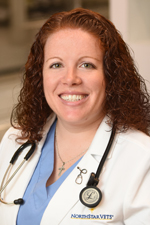 Dorothy Jackson, DVM, DACVIM (Oncology)
Dorothy Jackson, DVM, DACVIM (Oncology)
Originally from the South, Dr. Jackson attended Mississippi State University for her undergraduate studies and veterinary school. Following veterinary school in 2009, she completed a rotating internship at the University of Missouri followed by a specialty internship at Georgia Veterinary Specialists in Atlanta. Dr. Jackson was lucky enough to obtain both academic and private practice experience during her residency, training at the University of Pennsylvania and Veterinary Cancer Center in Connecticut. Following her residency, Dr. Jackson obtained board certification in Oncology and worked at Red Bank Veterinary Hospital for 2.5 years before joining the Northstar VETS team.
Being an Italian from the South, Dr. Jackson loves food. She loves cooking new recipes and trying new restaurants with her girlfriend…another Italian. When not traveling to new places, they enjoy their time at home with their 3 cats who keep them quite entertained.
Posted in Veterinary Medicine
Tagged dorothy jackson dvm, flow cytometry, leukemia, lymphoma, NorthStar VETS, parr, Veterinary Oncology
Leave a comment
Meet the NorthStar VETS team: Heather Knapp-Hoch, DVM, MS, DACVS
Dr. Heather Knapp-Hoch is a member of the Veterinary Surgery team at NorthStar VETS. In this blog post and video below, she talks about her education, the types of surgeries in which she specializes, and why NorthStar VETS is at the same level as the nation’s top academic veterinary specialty hospitals.
Dr. Knapp-Hoch’s education
We caught up with Dr. Knapp-Hoch, who was checking up on a patient. Dr. Knapp-Hoch is a veterinary surgeon, and she has always had a passion for helping animals. “I originally went to school to become a marine biologist and got into some research. I fell in love with research and I went to grad school for genetics and molecular biology. While I was there, I fell in love with clinical medicine, and working with animals during that process. That’s when I decided to take a different approach and go into veterinary medicine to embark upon a clinical journey to help animals.”
“I did my veterinary education at Washington State, then I did my internship and residency at Cornell University. I stayed on as a clinical instructor at Cornell for three years after I finished my residency. I mainly specialized in soft tissue surgery, however I also did orthopedics.”
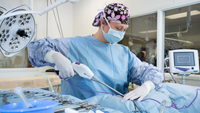 “What led me to NorthStar VETS was that I had family in the area and I wanted to get back into northern New Jersey, which is where I grew up. I was looking for a progressive private practice that had an academic feel to it and I found a really great home here at NorthStar VETS.”
“What led me to NorthStar VETS was that I had family in the area and I wanted to get back into northern New Jersey, which is where I grew up. I was looking for a progressive private practice that had an academic feel to it and I found a really great home here at NorthStar VETS.”
Dr. Knapp-Hoch’s specialties
Dr. Knapp-Hoch has several different specialties, and she treats a wide variety of cases at NorthStar VETS. “I do surgery on pets either on an emergency basis or on a planned surgical basis as a referral. I do both orthopedics and soft tissue, however, my passion is definitely surgical oncology. I do a lot of tumor surgeries and excisions of large masses and I also really love minimally-invasive surgery. I specialize in both surgical oncology and minimally-invasive surgery as well as Interventional Radiology.”
Why NorthStar VETS is on par with the top academic veterinary hospitals
Dr. Knapp-Hoch works alongside 40 different doctors at NorthStar VETS. “The patient care and the expertise of the doctors here is on par with any academic university I’ve ever been at and I think that that’s wonderful because I know when an animal comes here, they can get the well-rounded, specialized care of every specialty needed and that’s really an amazing thing to find at a private practice.” Dr. Knapp-Hoch and the team at NorthStar VETS are looking forward to helping you and your pets. She continued, “Seeing my patients come back for a recheck and seeing them with an improved quality of life, and being happy and healthy and returning to what they were before they had their problem that led them to have to visit me is what I love. That’s a really cool thing about my job, and it’s pretty impressive that we can practice medicine and surgery at a veterinary level with the same expectations that humans get. One thing that makes me happy is when pet parents come in and say that they would rather be treated here than at a human hospital. That really makes me feel good about the kind of care and quality of care we provide.
Learn more about the Surgery service at NorthStar VETS
 Heather Knapp-Hoch, DVM, MS, DACVS
Heather Knapp-Hoch, DVM, MS, DACVS
Originally from New Jersey, Dr. Knapp-Hoch is excited to return home and join the NorthStar VETS surgical team. Dr. Knapp-Hoch earned her Bachelor of Science in biology from Long Island University in 2001. She then traveled across the US to obtain a Masters degree in genetics and cell and molecular biology from Washington State University where she also obtained her Doctorate of Veterinary Medicine in 2007. Dr. Knapp-Hoch then completed a small animal rotating internship at Cornell University in 2008. Following her internship she completed a three-year surgical residency at Cornell University in 2011. She obtained board certification in 2012 and practiced as a small animal clinical instructor at Cornell University from 2011-2014.
Dr. Knapp-Hoch’s special areas of interest include surgical oncology and minimally invasive surgery including laser ablation of ectopic ureters. She is proficient in advanced wound management and has a special interest in the use of negative pressure wound therapy (NPWT) to treat difficult surgical and traumatic wounds. She is trained in both the tibial plateau leveling osteotomy (TPLO) and the tibial tuberosity advancement (TTA) surgical procedures for cranial cruciate ligament disease.
Posted in Pets, Veterinary Medicine
Tagged Heather Knapp-Hoch, NorthStar VETS, veterinary surgery
Leave a comment
NorthStar VETS Cool Case Bear
The team at NorthStar VETS is doing innovative and amazing things every day as they work to advance the level of care available to your pet. This is a new series of posts to be shared highlighting cool cases at NorthStar VETS and the types of things done to save pets and improve their quality of life. These are cases using innovative and cutting-edge medical techniques, and/or stories of pets beating the odds. Watch the doctor tell you the story in their own words via the video below. This is the story of K-9 Officer Bear, a German Shepherd that came to NorthStar VETS for an innovative new surgery technique to prevent bloat. Dr. Jason Coggeshall of the Surgery team was able to quickly get this working dog back on the job.
Learn more about the Surgery service at NorthStar VETS.
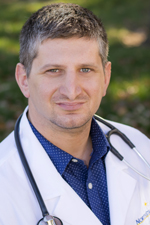 Jason Coggeshall, DVM
Jason Coggeshall, DVM
Dr. Coggeshall is a Maryland native with a passion for veterinary surgery, research and teaching. He earned his undergraduate degree at the University of Maryland and his doctorate in veterinary medicine at Tuskegee University’s School of Veterinary Medicine. Dr. Coggeshall completed internships at the Dallas Veterinary Surgical Center and Iowa State University. He also completed a Comparative Orthopedic Research fellowship at the University of Florida. Dr. Coggeshall completed the first year of his surgical residency at the Louisiana State University in Baton Rouge and the subsequent two years at the Veterinary Referral Center in Malvern, PA. Dr. Coggeshall has a strong interest in clinical research, orthopedic surgery, minimally invasive surgery, and trauma surgery.
The information presented on this web site is not intended to take the place of your family veterinarian’s advice and is not intended to diagnose, treat, cure or prevent any disease. Discuss this information with your own veterinarian to determine what is right for your pet. All information is intended for your general knowledge only and is not a substitute for medical advice or treatment for specific medical conditions. We can not and do not give you medical advice via this blog. The information contained in this online site and emails is presented in summary form only and intended to provide broad understanding and knowledge. The information should not be considered complete and should not be used in place of a visit, call, consultation or advice of your veterinarian. We do not recommend the self-management of your pet’s health problems.
Posted in Uncategorized
Leave a comment





